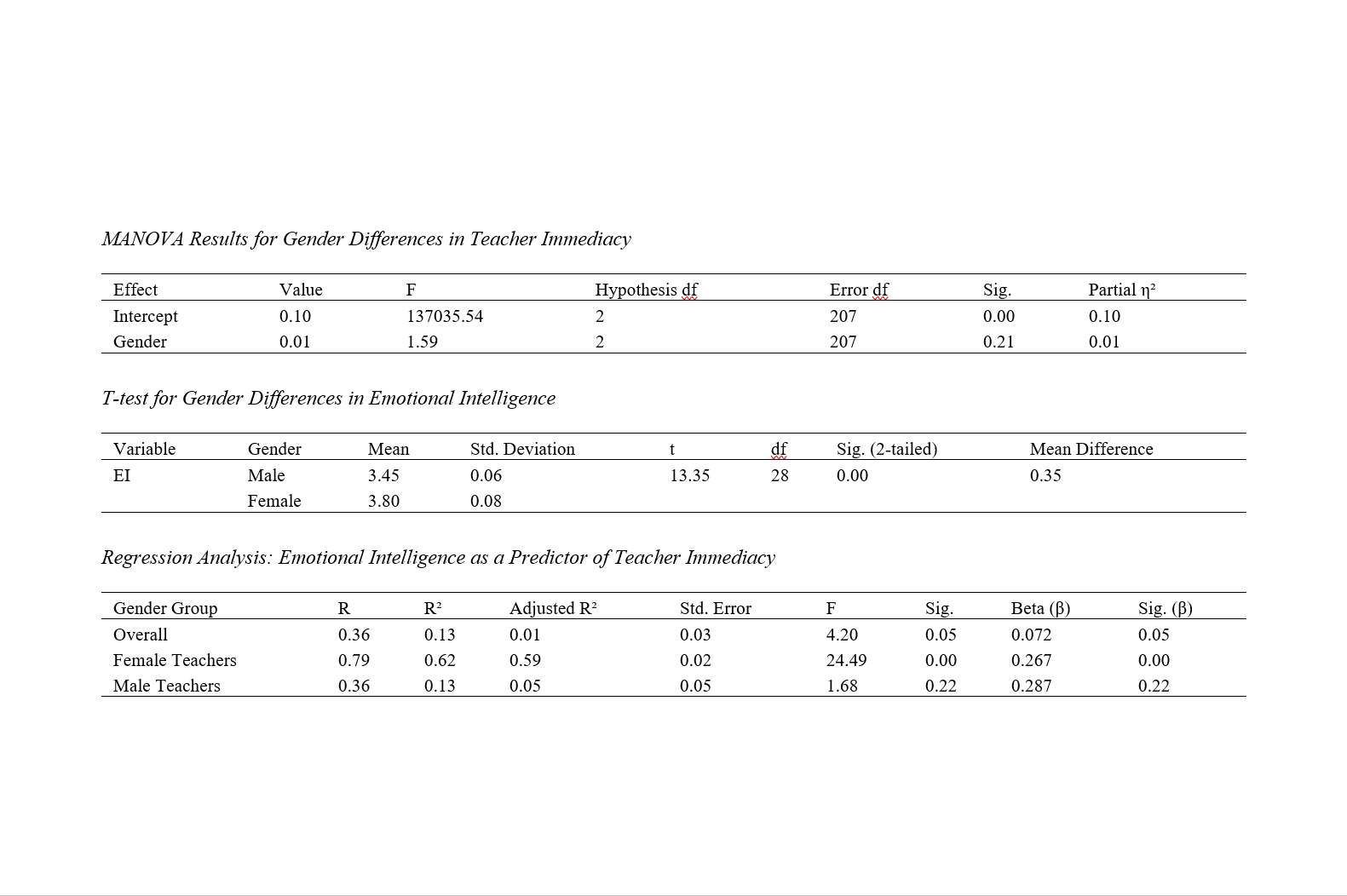Teachers’ Emotional Intelligence and Learner's Perceptions of Their Teachers’ Verbal and Non-Verbal Immediacy across Teacher’s Gender
Keywords:
Emotional Intelligence, Teacher Immediacy, Gender Differences, EFL Context, Iranian Education, Verbal Immediacy, Non-Verbal ImmediacyAbstract
Objective: This study aims to examine the relationship between teachers' Emotional Intelligence (EI) and learners' perceptions of their teachers' verbal and non-verbal immediacy across gender in the Iranian EFL context.
Methods and Materials: A descriptive-correlational design was employed, involving 210 learners (91 males and 119 females) and 30 teachers (13 males and 17 females) from three language institutes in Tabriz, Iran. Data were collected using the Verbal Immediacy Measure (VIM), Non-Verbal Immediacy Measure (NIM), and the Emotional Quotient Inventory (EQ-i). The data were analyzed using SPSS, with normality tests, independent samples t-tests, Multivariate Analysis of Variance (MANOVA), and linear regression analyses performed to explore the relationships between variables.
Findings:
The results indicated no significant gender differences in verbal and non-verbal immediacy as perceived by learners (F(2, 207) = 1.59, p > 0.05, partial η² = 0.01). However, female teachers were perceived to exhibit slightly higher levels of verbal immediacy (M = 73.63, SD = 0.24) compared to male teachers (M = 72.97, SD = 0.28), and higher levels of non-verbal immediacy (M = 53.99, SD = 0.20) compared to male teachers (M = 53.94, SD = 0.23). Significant gender differences were found in Emotional Intelligence (EI), with female teachers scoring higher (M = 3.80, SD = 0.08) than male teachers (M = 3.45, SD = 0.06), t(28) = 13.35, p < 0.01. EI was a significant predictor of teacher immediacy (R² = 0.13, F(1, 28) = 4.20, p = 0.05), particularly among female teachers (R² = 0.62, F(1, 15) = 24.49, p < 0.01). This suggests that higher EI contributes to more effective immediacy behaviors in the classroom, especially for female teachers.
Conclusion:
This study underscores the importance of Emotional Intelligence in enhancing teacher immediacy, particularly for female teachers in the Iranian EFL context. While both male and female teachers can effectively use immediacy behaviors, EI plays a more significant role for female teachers. The findings have important implications for teacher training programs, which should incorporate EI development to foster more supportive and engaging learning environments.
Downloads

Downloads
Additional Files
Published
Submitted
Revised
Accepted
Issue
Section
License
Copyright (c) 2024 Fariba Khabbaz Azar, Zohreh Seifoori, Saeideh Ahangari (Author)

This work is licensed under a Creative Commons Attribution-NonCommercial 4.0 International License.

























